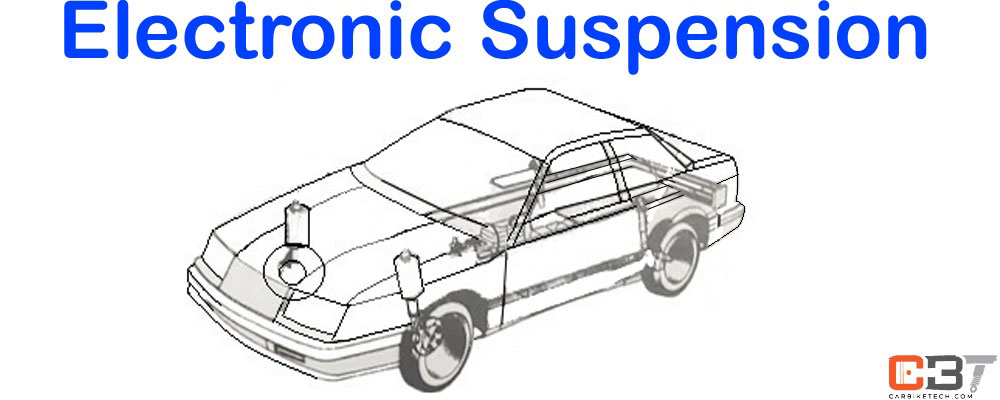Electronic Suspension:
Design:
Many manufacturers nowadays provide Electronic Ride Control or Variable Damping Suspension in their high-end cars. The driver can electronically adjust the shock absorbers for soft, regular, or fine suspension rides. The basic construction of the electronically adjustable suspension is here. The internal construction of the adjustment mechanism is shown.

Electronic Suspension Working:
When the driver presses the SOFT or FIRM switch, the ECM signals a solenoid or small electric motor at the top of each shock absorber. The motor then rotates slightly, opening or closing various size orifices in the piston. This changes the resistance to fluid flow within the shock absorber. Thus, the system controls vehicle rides only.
However, it does not control vehicle height. On some cars, a setting allows the shock absorbers to automatically select the proper damping for the road & driving conditions. Similar systems include auxiliary air springs also to control the height. Various sensors may send the ECM information on vehicle speed, roughness of the road, and body roll. The ECM then signals the shock absorbers to adjust to provide the best ride possible under the operating conditions.
Electronically Controlled Air Suspension:
Design:
The air suspension system has air springs that replace coil springs at all four wheels. The system controls spring rates and provides automatic height & level control. The rear air springs mount ahead of the rear axle on the lower suspension arms. The front air springs are part of the front strut assemblies. These air struts mount between the vehicle body & the steering knuckle.
Working:
An electronic air compressor supplies the air pressure that operates the system. An air dryer mounted on the compressor removes any moisture from the air. This prevents water, which could damage the system, from entering it. An “air-line” runs from the dryer to each air spring. A solenoid in each air spring opens & closes to control the air pressure and volume within the spring. The control module switches the compressor & the solenoids on & off, respectively.
Components:
The system includes three height sensors. These are magnetic sensors in the front air struts and in the right-rear shock absorber. The body settles when you add weight to the body. The height sensors respond by signaling the control module. It then starts the air compressor and opens the solenoid valves at the air springs. The increased air pressure “pumps up” the air springs. This causes the body to rise back to its original or trim height. Then the control module turns off the air compressor and closes the solenoid valves.
When you remove the load, the body rises above the trim height. The height sensors signal the control module. It responds by opening the solenoid valves to allow some air to escape from the springs. The control module closes the solenoid valves when the body settles back down to the trim height.
Manufacturers such as Mercedes Benz, BMW, and Audi employ electronic suspension in their cars.
